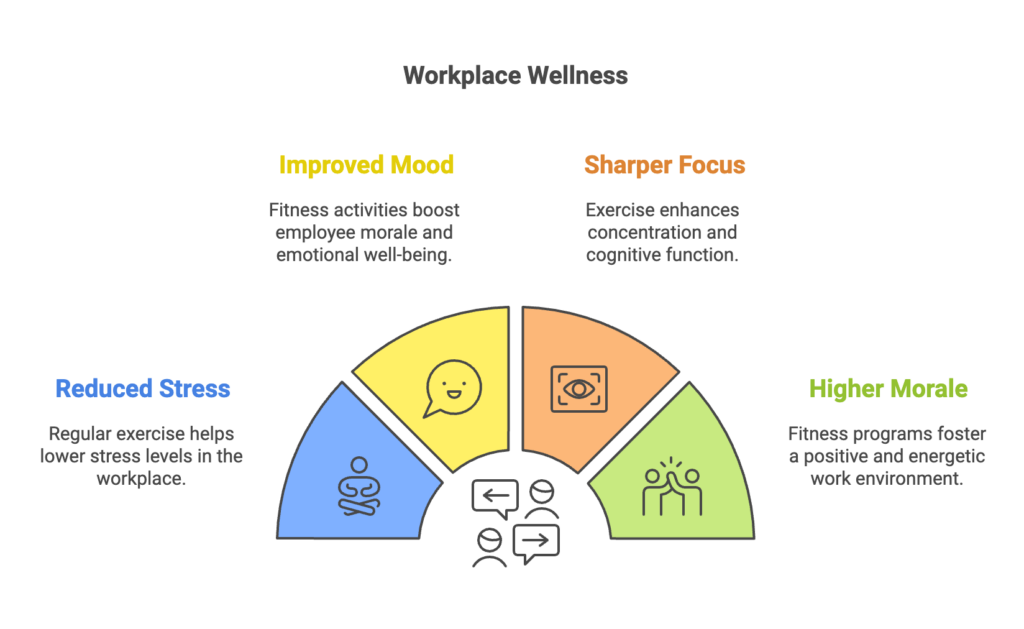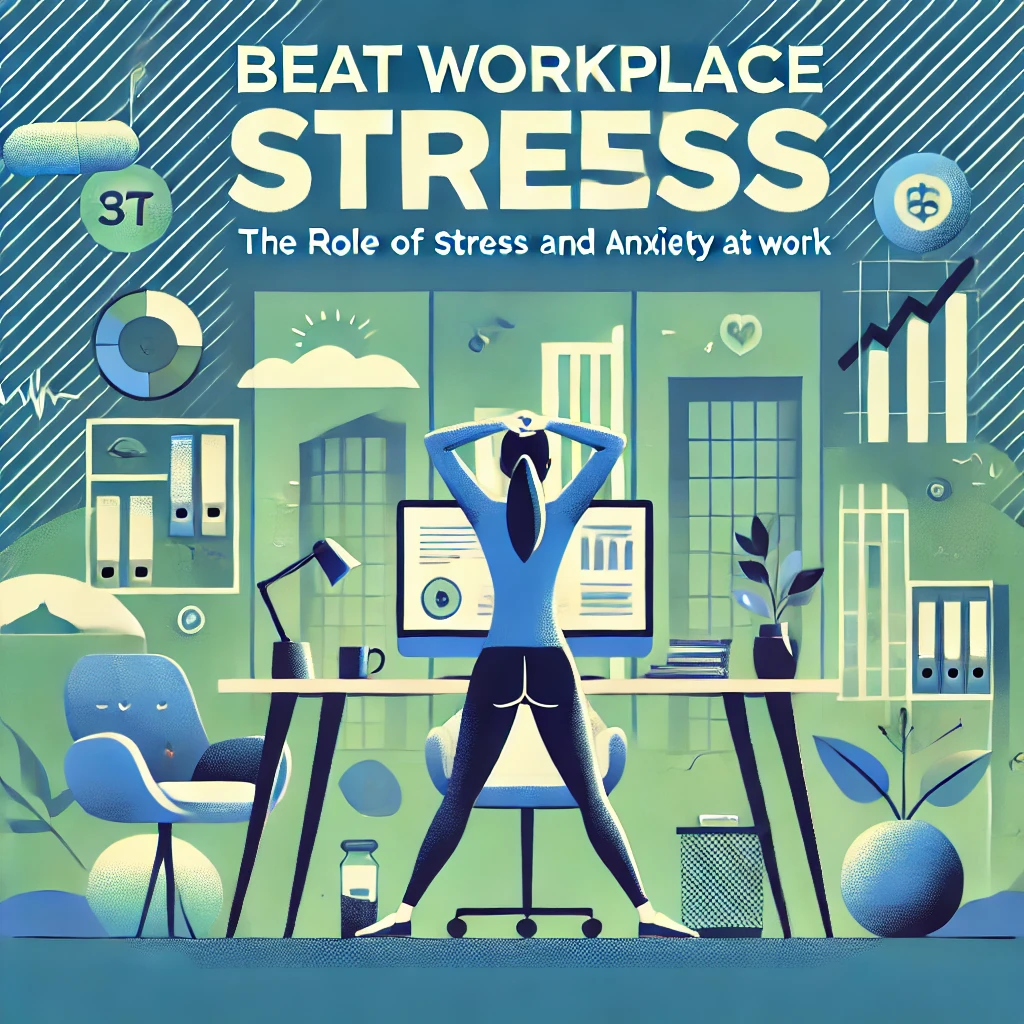Stress and anxiety are no strangers to the modern workplace. Deadlines, meetings, and the ever-present pressure to perform can leave employees feeling overwhelmed. What if we told you that one of the simplest and most effective solutions is already within reach? Exercise—whether it’s a quick stretch, a brisk walk, or a full workout—has a profound impact on mental health.
In this post, we’ll dive into how regular physical activity combats stress and anxiety, backed by scientific studies, and explore how businesses can use fitness to foster healthier, happier workplaces.
The Stress-Anxiety Epidemic in the Workplace
Stress and anxiety affect millions of workers globally, leading to burnout, absenteeism, and decreased productivity. According to the World Health Organization (WHO), work-related stress is one of the most significant health challenges of the 21st century. Chronic stress can elevate cortisol (the stress hormone) levels, impairing concentration, mood, and overall well-being.
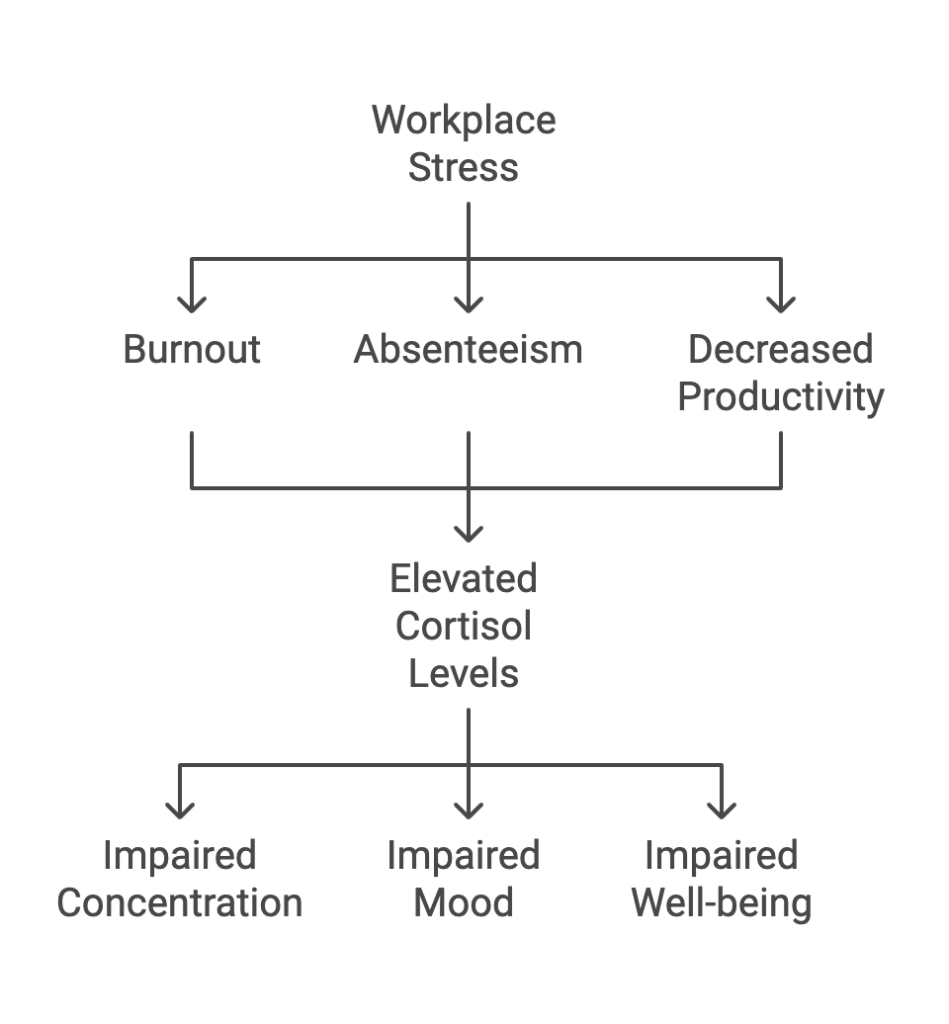
How Exercise Reduces Stress Hormones
Exercise directly counteracts stress by lowering cortisol levels. A study published in Psychoneuroendocrinology found that individuals who engaged in regular aerobic exercise experienced significantly lower cortisol responses to stress. This means they could manage stressful situations more effectively than their sedentary peers.
Physical activity also helps regulate adrenaline, reducing the “fight or flight” response often triggered by workplace challenges. Over time, this leads to a more balanced and resilient response to stress.
Endorphins: Nature’s Mood Boosters
When you exercise, your brain releases endorphins—chemicals that act as natural painkillers and mood elevators. This phenomenon, often referred to as the “runner’s high,” provides immediate relief from anxiety and improves mental clarity.
In a study published in The Journal of Psychiatry and Neuroscience, researchers found that endorphins released during exercise mimic the effects of antidepressants by binding to opioid receptors in the brain, reducing feelings of pain and enhancing mood.
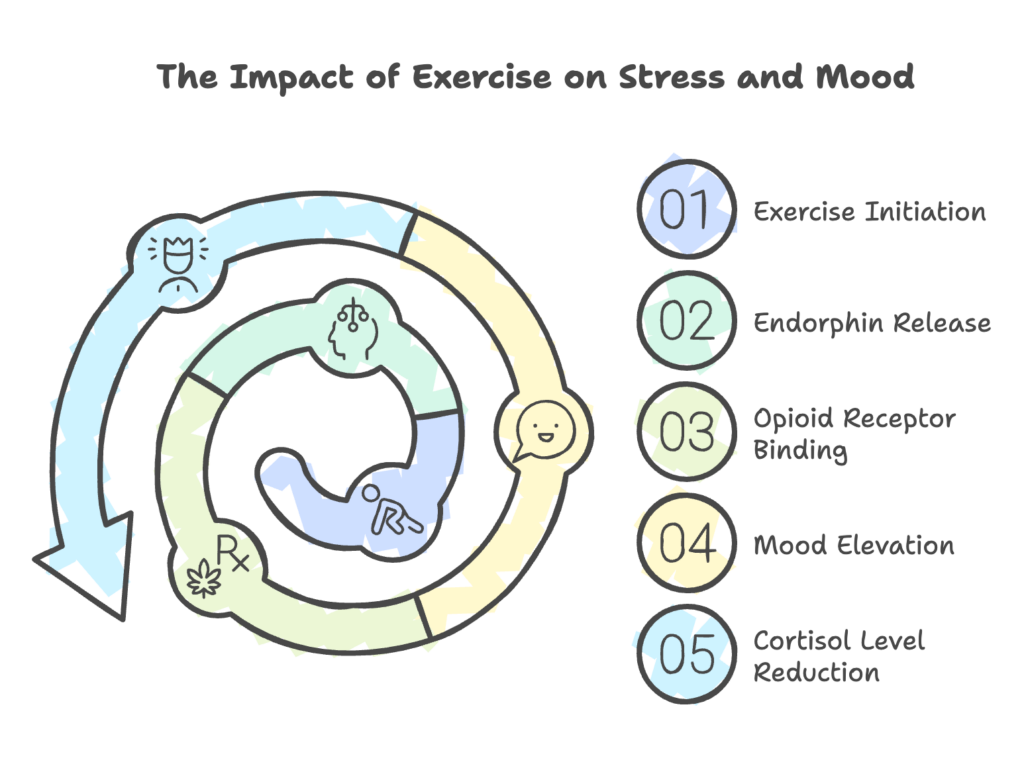
Exercise and Anxiety: A Proven Connection
For individuals struggling with anxiety, regular exercise offers a powerful coping mechanism. A meta-analysis in Depression and Anxiety concluded that physical activity reduces anxiety symptoms by an average of 20-30%. Activities like running, cycling, and even yoga were shown to improve emotional stability and reduce intrusive thoughts.
This happens because exercise increases the production of gamma-aminobutyric acid (GABA), a neurotransmitter that calms the brain. In simpler terms, fitness acts as a natural anti-anxiety remedy.
The Cognitive Benefits of Fitness
Beyond stress relief, exercise also sharpens mental clarity and focus, which are critical in high-pressure work environments. Physical activity boosts blood flow to the brain, enhancing cognitive functions such as memory, problem-solving, and decision-making.
For instance, a study in The British Journal of Sports Medicine found that even short bouts of exercise improve executive functions and working memory. This means employees who incorporate fitness into their routines are not only less stressed but also more productive.
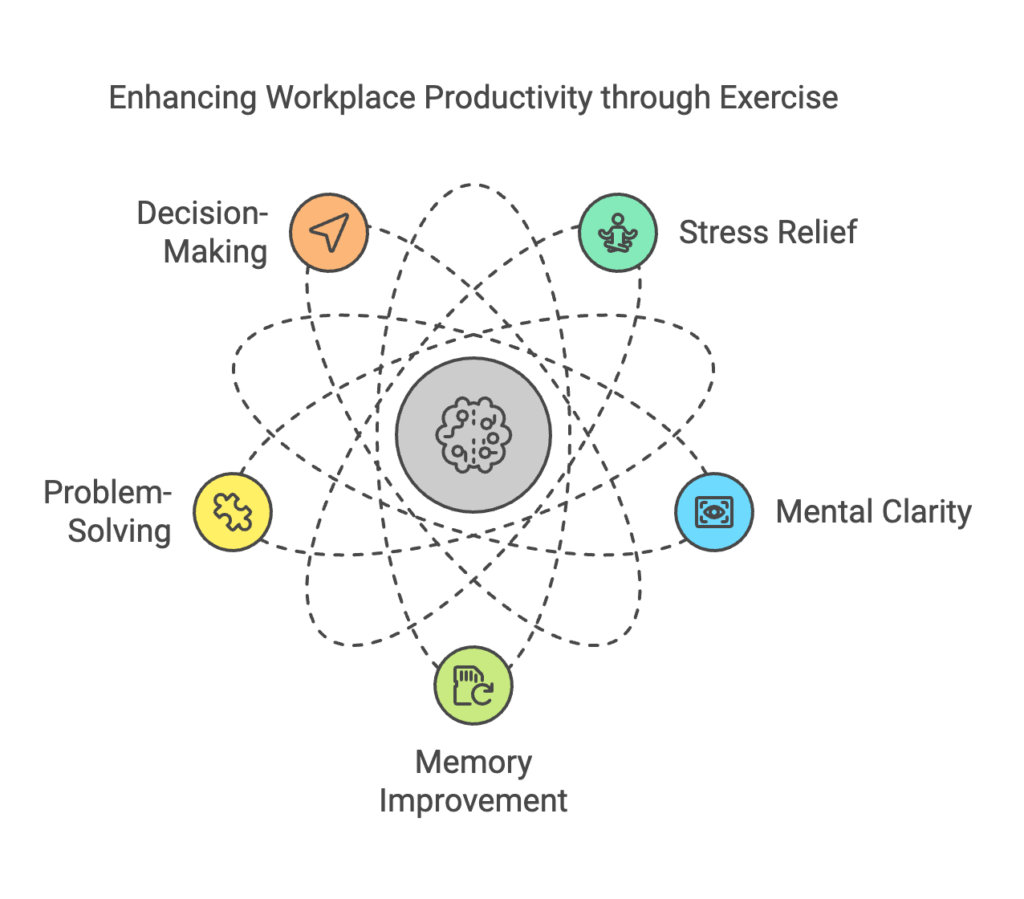
Types of Exercise for Stress and Anxiety Relief
- Cardiovascular Activities
- Running, cycling, and swimming are excellent for reducing cortisol and increasing endorphins.
- Try This: Encourage employees to start their day with a 15-minute brisk walk.
- Yoga and Mindfulness-Based Fitness
- Yoga combines movement with controlled breathing, which directly lowers heart rate and stress levels. A study in Frontiers in Human Neuroscience confirmed yoga’s ability to enhance mood and reduce anxiety.
- Strength Training
- Lifting weights doesn’t just build muscle—it also boosts self-confidence and reduces symptoms of depression. Resistance training has been shown to improve sleep quality, a critical factor in managing stress.
- Team Sports
- Activities like soccer or basketball promote social bonding, which reduces feelings of isolation and boosts morale.
How Businesses Can Leverage Fitness to Combat Workplace Stress
1. Offer On-Site Fitness Programs
Bring yoga instructors or fitness trainers to the office. Group classes foster community and provide a break from work-related stress.
2. Implement “Fitness Breaks”
Encourage short activity breaks throughout the day, such as 10-minute stretching or walking sessions.
3. Create a Fitness-Friendly Culture
Provide gym memberships or set up a fitness reimbursement program. Recognize employees who prioritize wellness.
4. Leverage Virtual Fitness Solutions
For hybrid or remote teams, offer online workout or mindfulness sessions to ensure inclusivity.
Real-Life Success Stories
1. Google’s Wellness Initiatives
Google promotes employee fitness through on-site gyms, group fitness classes, and nap pods for mental recharge. Employees report lower stress levels and higher productivity.
2. Johnson & Johnson’s “Energy for Performance” Program
J&J’s program focuses on holistic wellness, combining fitness, nutrition, and mindfulness. The result? Employees are 50% more engaged and significantly less stressed.
Conclusion
Stress and anxiety don’t have to define the workplace. With regular exercise, employees can experience reduced stress levels, improved mood, and sharper focus. Businesses that prioritize fitness programs not only create healthier teams but also boost morale and productivity.
Take the first step today—whether it’s a short walk or a yoga session—and feel the difference. Your mental health and workplace will thank you.
